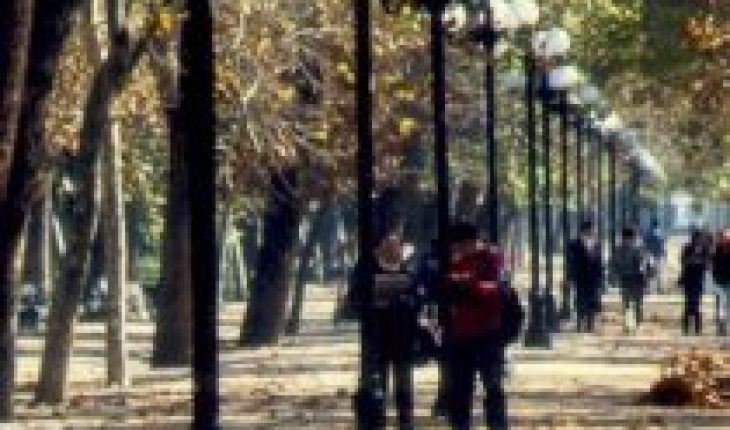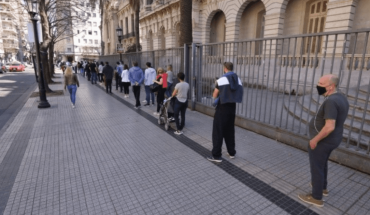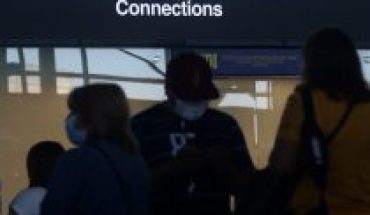
An architect named Mardones took our still President a project to remodel, understand destroy, the Forest Park, putting into underground MAC art collections, which naturally involves introducing parking lots, confectionery, ATMs, ramps, restaurants, commerce and everything a “cultural” mall can want for its promoters.
The neighborhood where the Forest Park is located has been severely hit by various situations that derive from the natural deregulated and jungle urban development of our city. Today in pandemic there has been a lower incidence of all this, but the macro trend is what we have.
The two million floating people who roam the commune of Santiago every day, accelerated tourism, peaceful and/or vandal protesters of the outbreak, the pressure of migrants who prefer the center to, say, Vitacura or Apoquindo, where the architect Mardones and the still President live, the pressure of street trade that is a consequence of the poverty and overcrowding that Minister Mañalich discovered when visiting Santiago west, the vigorous expansion of the metro network, the gentrification, the predatory trade in the slopes by both restaurants and bars as well as musicians and street vendors in minineoliberal format… all that energy that could be positive, since there is no foresight of anything or regulation adapted to real issues, nor serious policies, has simply destroyed the neighborhood, changing its human and economic geography, and urban planners will know how to conceptualize what happens: neighbors live it in our own flesh.
It is incredible that a project that turns its back on the current dramatic situation of the Forestal-Lastarria-Bellas Artes district, which has consulted nothing with neighbors and neighbors, and which wants to impose very beautiful ideas that appear in international magazines in a hot area of the city, as if it were an abstract cloth, begins to circulate.
Architect Mardones argues that his project would increase pedestrian and park areas. It is possible, but today the survival of the neighborhood depends not on that, but on how the lives of the neighbors, the people who live and sleep and have breakfast there are adapted, with the pressure of visitors, tourists and other groups who need, too, to use the neighborhood. Highway layouts are another scourk that has been destroying some surrounding areas. You have to go and see how the surroundings of Mapocho Station, the Central Market and the Vega Chica are. Much of what’s in there is simply poverty, chaos, ugliness, abandonment, desperate survival.
What the Forest Park, designed in 1910 by Georges Dubois, a connotated French landscape architect, needs, as part of a comprehensive plan derived from the channeling of the river, is to preserve its heritage beauty, regulate its uses, protect and strengthen its facilities. It is a long-successful space, and as is often the case with such spaces, the passion to intervene appears, not to improve the lives of people, but so that beings who do not live there or visit it much do their business.
Usually huge plastic mamotretes are deployed on their meadows “for children”, which is indeed one more business of the many that come to be made in a sector of the city where, forget, neighbors live, there are children, old ladies, young people, also professionals and artists. The attitude of the municipality is, above all, to make box.
Nothing worse for a city than transforming its neighborhoods into monoculture. A living city must know how to combine its diverse populations and their uses. As the Forest Park is not and should not be a museum, Lastarria is not and should not be a food yard or a Persian. We need to know how to combine uses in the denser areas of the city.
The Forestry-Lastarria-Bellas Artes district contains since many spaces were created for culture, it is an emblematic, historical area, with a lot of national monuments: we do not have to make it a cultural mall or a tourist mall, nor a plain of protests: culture and tourism, also protest, must be developed, grown and enriched with respect to other urban uses. When we talk about urban uses, we talk about ladies waiting for the bus, students who go to school, small shops, families who spend the afternoon in their homes, young children.
Like the whole neighborhood, the Forest Park today needs respectful use from the people of the city and the country. This project is all that contrario: bombastic ideas that hide real problems, one-off initiatives that turn their backs on what’s happening in Santiago as a whole. Much of the vigour of the outbreak is explained by the discrimination suffered by so many non-rich communes in the Metropolitan Region, which are the majority: just enter the metro network, peek into a station that is not left in Providencia, the Counts, Vitacura, Auñoa or La Reina, and see there an urbanism of lack and misery, to see abandonment. Investing millions of dollars in unnecessary infrastructure in an already overutilized area is a lack of judgment.
What measures of urban aggiornamento does Santiago need today, and with it the Forest Park area? I’m sure a lot of them. Santiago should certainly be decentralized and treated as a single organic entity, not as a traumatic aggregation of communes living many of them in urban standards of the poorest African cities, glued to others that enjoy the level of the richest European cities, crossed all by a single metro network, an otherwise very efficient network : such a situation is, first of all, explosive, we have already experienced it, and secondly atrociously unfair and humiliating for the majority of the population.
The city should not go ahead with its criteria of segregation and commodization and manic privatization of public spaces. Heritage spaces must be protected and suitable for current uses. And above all, the absence of a global authority for the city, the feudalization of urban territory, causes every new urban action, rather than helping the whole, to destabilize it.
Long live the Forest Park and its surroundings! May confusion and discouragement fall upon these deaf, blind, avid and disheless architects and promoters!
The content poured into this opinion column is the sole responsibility of its author, and does not necessarily reflect the editorial line or position of El Mostrador.





